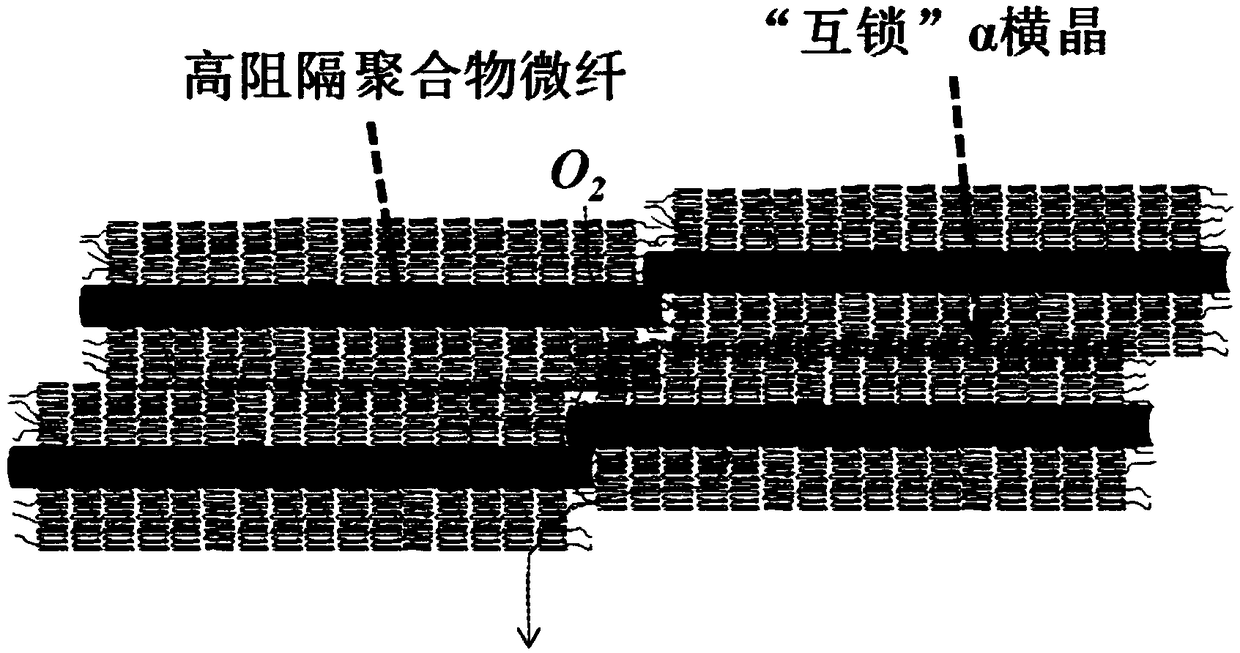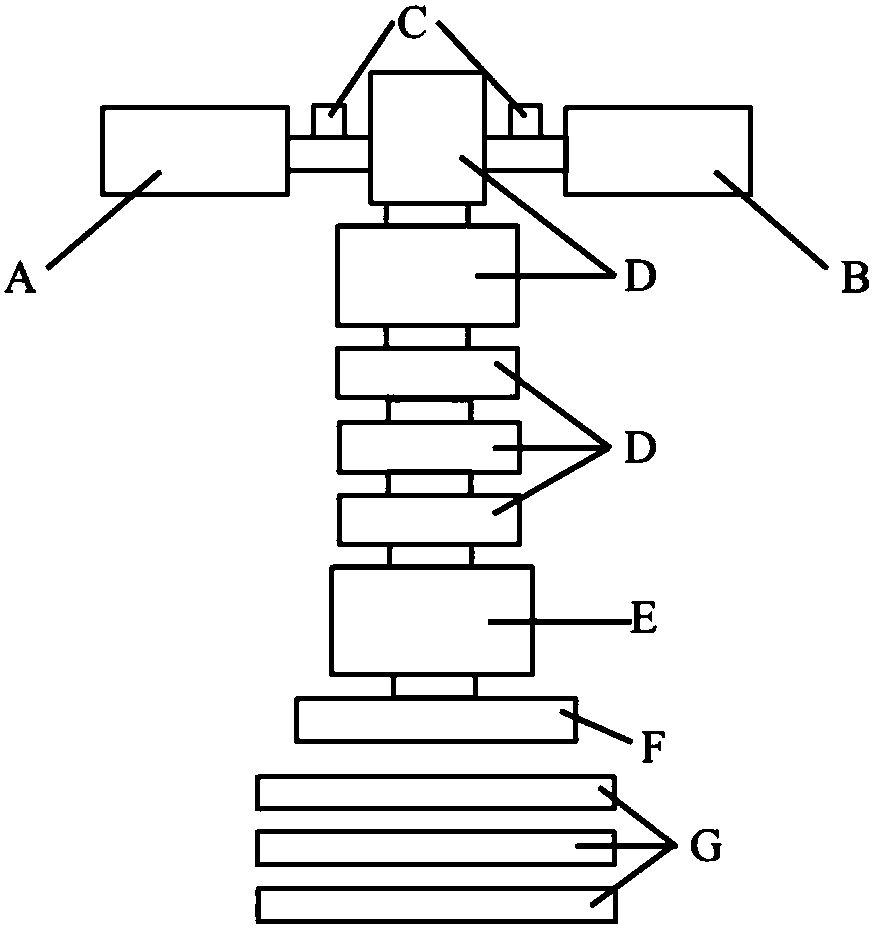Method for preparing high-barrier polypropylene material through phase morphology and interface crystallization regulation
A polypropylene material and high-barrier technology, which is applied in the field of preparing high-barrier polypropylene materials by controlling phase morphology and interface crystallization, achieves the effects of low manufacturing cost, improved gas barrier performance, and easy mold processing
- Summary
- Abstract
- Description
- Claims
- Application Information
AI Technical Summary
Problems solved by technology
Method used
Image
Examples
Embodiment 1
[0027] Mix the basic salt α-nucleating agent of substituted aryl heterocyclic aluminum phosphate (trade name NA-21) and ethylene-vinyl alcohol copolymer (EVOH) at a weight ratio of 0.5 : 99.5, and then put it into the twin-screw extruder Medium-extrusion granulation to prepare EVOH containing NA-21. Among them, the temperature of each section of the twin-screw extruder is controlled at 180 o C-190 o C-210 o C-210 o C-200 o c. After mixing EVOH containing NA-21 and pure polypropylene at a ratio of 10:90 (by weight), they are put into micro-nano laminated co-extrusion equipment for in-situ microfibrillation, in which the feeding section of the extruder (A, B), the conveying The temperature of section, melting section, homogenization section, layer distributor (D, E), and die (F) is 180 o C. 190 o C. 210 o C. 210 o C. 210 o C. 200 o c. Test the gas barrier properties of extrudates: Compared with pure polypropylene, the oxygen permeability coefficient of the material i...
Embodiment 2
[0029] The sorbitol-based α-nucleating agent (trade name T5688) and polyamide 6 (PA6) were mixed at a weight ratio of 0.7:99.3, and put into a twin-screw extruder for extrusion and granulation to obtain PA6 containing T5688. Among them, the temperature of each section of the twin-screw extruder is controlled at 180 o C-220 o C-230 o C-230 o C-220 o c. After mixing PA6 containing T5688 and pure polypropylene at a ratio of 20:80 (weight ratio), put them into micro-nano laminated co-extrusion equipment for in-situ microfibrillation, where the feeding section, conveying section, The temperatures of melting section, homogenizing section, layer distributor (D, E), and die (F) are respectively 180 o C. 220 o C. 230 o C. 230 o C. 230 o C. 220 o c. The oxygen permeability coefficient of the in-situ microfiber composite is 4.035×10 -16 cm 3 cm / cm 2 · s · Pa.
Embodiment 3
[0031] The sorbitol-based α-nucleating agent (trade name T5688) and polyamide 6 (PA6) were mixed at a weight ratio of 0.7:99.3, and put into a twin-screw extruder for extrusion and granulation to obtain PA6 containing T5688. Among them, the temperature of each section of the twin-screw extruder is controlled at 180 o C-220 o C-230 o C-230 o C-220 o c. After mixing PA6 containing T5688 and pure polypropylene at a ratio of 20:80 (weight ratio), put them into micro-nano laminated co-extrusion equipment for in-situ microfibrillation, where the feeding section, conveying section, The temperatures of melting section, homogenizing section, layer distributor (D, E), and die (F) are respectively 180 o C. 220 o C. 230 o C. 230 o C. 230 o C. 220 o c. Fix the cooled and shaped sample in the mold and put it into 200 o After 10 minutes of oven melting at C, quickly move to 130 o Keep the temperature in an oil bath in C for 4 hours to obtain a heat-treated sample. The oxygen pe...
PUM
 Login to View More
Login to View More Abstract
Description
Claims
Application Information
 Login to View More
Login to View More - R&D
- Intellectual Property
- Life Sciences
- Materials
- Tech Scout
- Unparalleled Data Quality
- Higher Quality Content
- 60% Fewer Hallucinations
Browse by: Latest US Patents, China's latest patents, Technical Efficacy Thesaurus, Application Domain, Technology Topic, Popular Technical Reports.
© 2025 PatSnap. All rights reserved.Legal|Privacy policy|Modern Slavery Act Transparency Statement|Sitemap|About US| Contact US: help@patsnap.com


